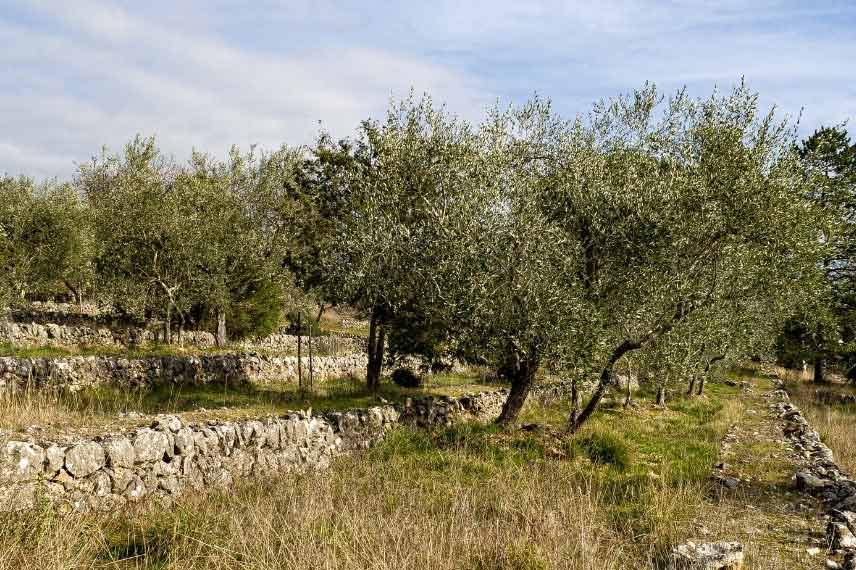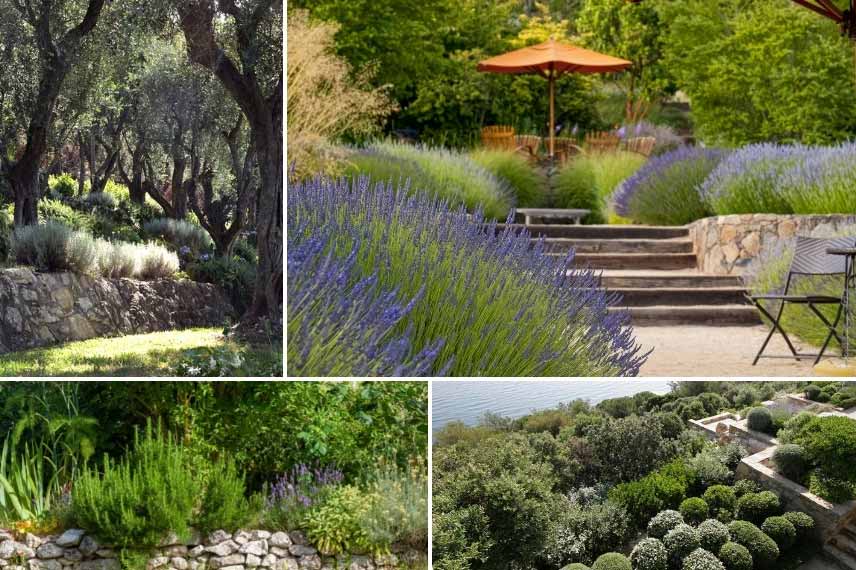
Designing a terraced garden
How to design a sloped garden using terraces?
Contents
In the south, they are called “restanco” (in Provençal) or “restanca” (in Occitan). They are also known as “faissa,” “bancaous,” or “oullières”… a multitude of names for a type of construction that first became widespread in Provence from the late 18th century and then across all the stony hills of the south. The restanques originally allowed for the creation of arable land on uncultivated slopes strewn with stones. The term initially referred to dry stone walls (built without mortar) and later, by extension, to the terraces thus created.
Designing a garden with restanques requires specific landscaping work, as well as adapting gardening techniques and selecting the right plants… So if your land is sloped, and you’re wondering how to develop it, and the idea of creating a terraced garden appeals to you, follow these few tips.

The origin of terraced gardens: making stony hills arable
What is a terraced garden?
The terraced garden requires the presence of two elements: a slope and stones. Originally, farmers collected the stones and pebbles found on a plot to work the soil and piled them into low walls to delineate the cleared area. The soil, cleared of stones, was simultaneously levelled to create a flat terrace, with the stones serving to retain the earth. Remnants of these terraced gardens—now partially collapsed—can be found on many hills and slopes in southern France. The plots created at that time allowed for the planting of small vegetable gardens, vineyards, or olive trees. Today, terraced gardens, also known as stepped or tiered gardens, allow for beautiful landscaping creations that integrate stone and vegetation.
If your garden has a natural slope, you can create this type of garden. If, on the other hand, it is flat and you are keen on developing terraces, significant work will be required, including the addition of topsoil and stones to create the retaining walls; this work may necessitate the involvement of professionals, as earthmoving equipment will be needed along with expertise in landscape masonry.

A slope and stones: the prerequisites for creating a stunning terraced garden atmosphere
Advantages and disadvantages of terracing
If your garden has slopes, you have two options:
- retain the slopes and vegetate them;
- reshape them into terraces or raised beds.
Choosing to create terraces comes with certain constraints:
- the cost of shaping the land, adding topsoil and stones;
- managing water runoff (from rain and possibly irrigation);
- managing access: stairs and/or pathways will be necessary to move from one level to another;
- ensuring safety, especially for children, as there is a risk of falling.
On the plus side: unlike a sloped garden, gardening is easier as it takes place on flat terraces: a vegetable garden becomes possible, as do tree plantings and expanses of lawn. The areas become cultivable, and you will truly benefit from the cleared spaces. Finally, the creation of terraces gives a unique character to the garden, a strong identity, and real charm. It adds genuine value to your home.
The layout
Whether you have chosen to undertake the landscaping yourself because you are brave and have a passion for garden design, or whether you have opted to hire a landscaper, you will need to take measurements of the area to be landscaped. This will allow you to draw up a plan and calculate the quantities of materials needed, primarily stones and soil. Walk around your garden and carefully observe the details of the environment to consider:
- the direction of rainwater flow;
- the access and circulation necessary for your daily life;
- the elements to integrate: existing trees, a well, an irrigation system, your vegetable garden, the garden shed, or the swimming pool.
Read also
How to plant flowers on a low wall?The low walls
Stones are the basic material for terraced gardens: if you do not have enough on-site, research local rocks, how they are cut, and their weathering. Depending on your preferences, budget, and local resources, you can choose between cut or uncut stones. Gabions are also an alternative: the steel structures are sold empty, and it “just” requires filling them with stones on-site. It is the choice of stone and the sizing of the terraces that will give the place its character. The different levels should have harmonious height and width. The width must be sufficient for planting, and the height should prevent dangerous falls. Finally, water must be able to drain away through drainage and evacuation holes provided for this purpose.
→ To assist you in building the walls, check out our tutorial: How to build a dry stone wall? The choice of materials gives style to the terraces: gabions, cut or rough stones
The choice of materials gives style to the terraces: gabions, cut or rough stones
Stairs and paths
Stairs and pathways are essential for moving from terrace to terrace. The steeper the steps, the quicker they lead from one point to another… but isn’t the garden primarily a place for relaxation? Unless necessary, opt for low and wide steps that allow for a leisurely stroll. In humid or cold regions, stairs should be safe and rough to prevent slips during rain or frost, and water should not stagnate on them.
Various materials can be used for the stairs and paths connecting the terraces: stones, wood, steel, gravel, stepping stones… let your imagination run wild and make the most of materials found on-site.
Finally, remember that it is very difficult to navigate steps with a wheelbarrow! The mower will also struggle to tackle the slopes… As for dragging hoses between different levels to water your flowers and vegetable garden suffering from drought, the task will be worse than on flat or sloped terrain. So think about future maintenance! Gentle pathways to facilitate garden upkeep and water points planned at various locations for potential automatic watering will be invaluable.

Various materials can be used to create the stairs
Choosing Plants
The soil of your terraces will likely be naturally draining, with plenty of stones. If not, ensure proper drainage at planting. If you need to add topsoil, make sure it is of good quality and possibly amended. The range of Mediterranean plants will be well suited for planting on terraces, featuring low-maintenance plants that harmonise with the style of the garden created:
- plant trees such as olive trees, holm oaks, or strawberry trees
- plant bushes such as laurustinus, phlomis, and mastic trees or callistemons
- plant perennials and shrubs such as lavenders, helichrysum, cistus, or rosemary
- climbing plants can also green the walls and soften the mineral aspect
All that’s left is to enjoy your beautiful terraces by setting up a resting corner here and there under a parasol or with a bench beneath the foliage of an olive tree!

The range of Mediterranean plants is well suited for planting on terraces
- Subscribe!
- Contents
































Comments